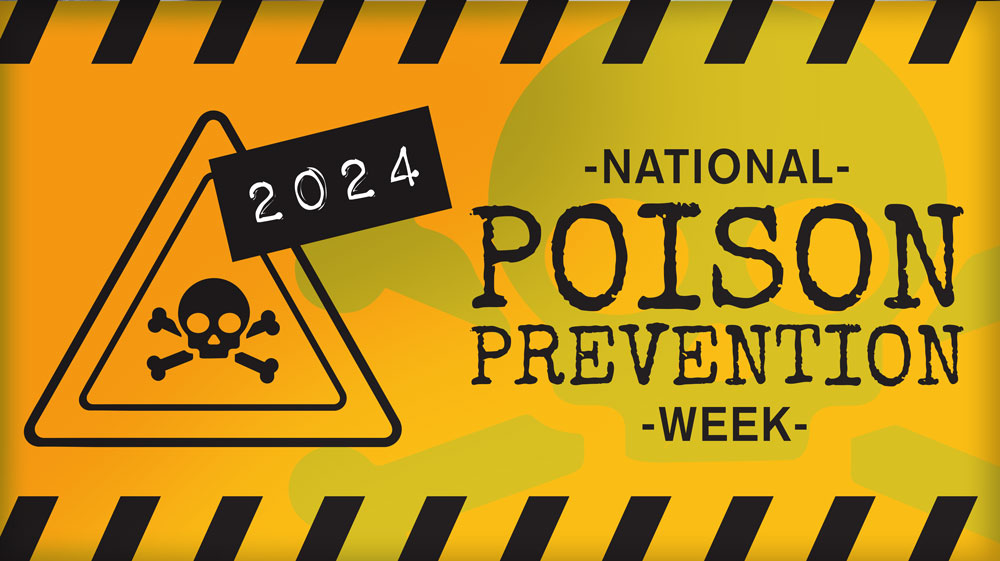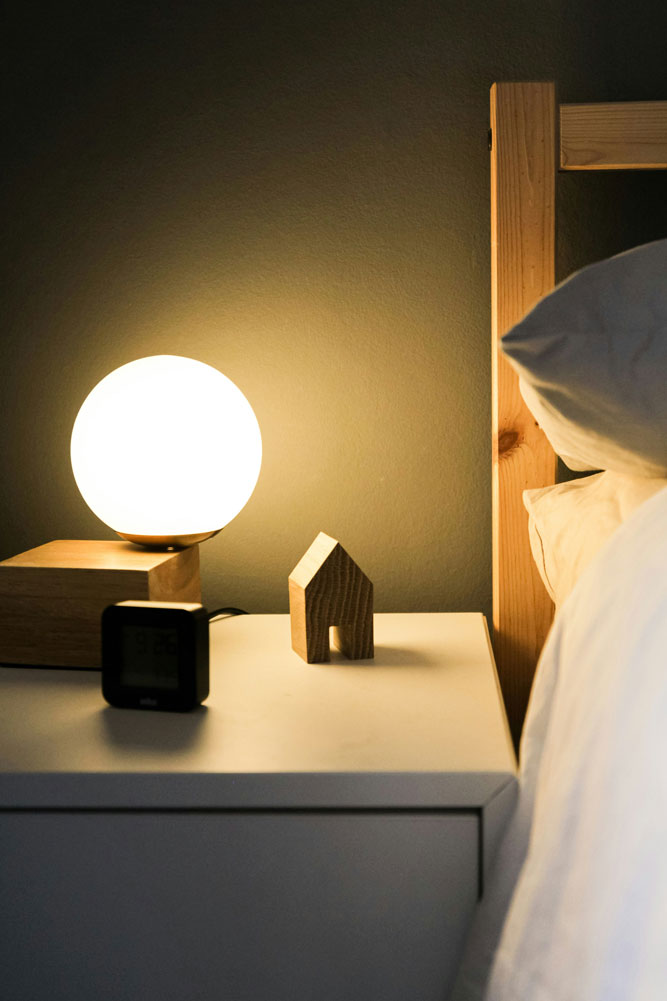Poison Prevention Tips:
These Are the Common Household Poisons
Every year, the third week of March is National Poison Prevention Week. There are 55 total Poison Centers across the country that manage Poison Control helplines, directing callers about the best strategies for remediating suspected poisoning incidents.

Many common poisons are hidden around the home; some of these substances might even seem benign. National Poison Control call statistics from 2021 reveal that 99 percent of poisonings among children younger than six were accidental; cosmetics/personal care products and cleaning substances were the two leading causes of pediatric poisonings. Analgesics (pain killers), herbal/dietary supplements/homeopathic substances, and foreign bodies/toys rounded out the top five offenders.
What are the poisons hiding in your home? Use Mehlville Fire Protection District’s poison guide to uncover all the potential poisons in the home.
Table of Contents:
Household Cleaners: Poisons Hiding Beneath the Cabinet
Household cleaners are either toxic or non-toxic. Unfortunately, many of the most commonly purchased cleaners fall into the toxic category. The following cleaners are poisonous if ingested:
- Toilet bowl cleaner
- Bleach
- Laundry detergent
- Lysol
- Chlorine
- Oven cleaner
Children–especially young toddlers–could access cabinets with these cleaners and accidentally ingest the chemicals. Household cleaners are among the most common substances, leading parents to contact their Poison Control hotline.
Make these chemicals difficult for children to access, and install childproof locks on all cabinets. These locks are simple to install and prevent small hands from reaching into cabinets.
Comet Cleaner Poisoning
Comet cleaning powder is a popular household staple for cleaning bathtubs and sinks. Yes, it’s also dangerous if ingested. Comet can lead to stomach irritation or other symptoms; contact Poison Control if a child ingests the powder.
Switch to Non-Toxic Household Cleaners
Save stress and worry by switching to non-toxic household cleaners. A variety of companies offer these cleaners. Be sure to read the ingredients list and the FAQ information about the product (online) to ensure that the cleaner is non-toxic. Don’t confuse “eco-friendly” products with non-toxic products; cleaners that are deemed sustainable can be toxic.
Herbal / Dietary Supplements in the Home
Many accidental poisonings among young children occur when they ingest herbal/dietary supplements. These products may seem benign, but even vitamins can lead to a Poison Control call.
As herbal and vitamin supplements now include “gummies,” children may mistake these supplements for candy and overdose. Common herbal/ dietary supplements that could lead to accidental poisoning include:
- Cannabis Gummies
- Gummy Vitamins
- Melatonin
The Dangers of Cannabis Gummies
Cannabis gummies or “edibles” may be a convenient way for adults to dose their cannabis, but young children do not understand that these gummies are not candy. As “edibles” rise in popularity, so do cases of accidental poisoning among children. In 2021, more than 3,000 children accidentally ingested these gummies.
Another form of cannabis also has become a problematic poison. In 2022, more than 1,000 children aged five and younger were exposed to Delta-8 THC.
Gummy Vitamins: Too Much of a Good Thing
Vitamins may provide health benefits for young children, but too many vitamins can lead to problems. Gummy vitamins provide an alluring solution for parents to encourage their children to take a daily vitamin. Unfortunately, the gummy vitamins may be perceived as tasty candy, enticing children to seek out the bottle and have a vitamin snack.
If parents give their children gummy vitamins, store these supplements up high and out of reach of little hands. Most caps are also locked to ensure that children cannot easily open the bottle.

Can You Overdose on Melatonin?
Melatonin is a natural chemical that induces feelings of sleepiness. Individuals who struggle to fall asleep quickly might take melatonin to help them lull off to sleep. Parents might also provide a small dose of melatonin to their children. Before giving melatonin to a child of any age, speak to a pediatrician. Also, keep this supplement on a high shelf and away from young children. It is possible to take too much melatonin.
Too much melatonin can lead to excessive sleepiness and other side effects. Poison Control dedicates an entire webpage to melatonin uses and benefits.
Food Poisoning Concerns
Food can be poisonous. Undercooked poultry and fish can lead to food poisoning; this condition causes gastrointestinal upset and other symptoms. The severity and type of symptoms depend upon the bacteria involved. Common organisms that cause food poisoning include:
- Listeria
- E-coli
- Salmonella
- Hepatitis
Poison Control hotlines accept calls related to food poisoning, and medical professionals advise when to seek emergency care for food poisoning symptoms. In some cases, the symptoms may need to run their course.
Heat Protects Your Meat
Cooking meats and fish to the correct temperature minimizes the risk of foodborne illness. How hot should you cook fish, poultry, roasts, and steaks to prevent food poisoning? Use this simple chart to understand the optimum temperature:
| Meat | Temperature (In the Center) |
| Poultry | 165 degrees Fahrenheit |
| Chops | 145 degrees Fahrenheit (minimum!) |
| Ham | 160 degrees Fahrenheit |
| Ground Meat | 160 degrees Fahrenheit |
| Steak | 145 degrees Fahrenheit |
| Fish | 145 degrees Fahrenheit |
Poison Audit: Tips to Keep Children Safe
Parents can conduct a poison audit to find potential poisons in their home and ensure that these substances are out of reach of children. Many cleaning agents are toxic and ingestion can lead to a variety of symptoms.
Follow these five simple tips to prevent accidental poisoning:
- Store cleaners in locked cabinets.
- Check caps of vitamins, supplements, and medications; always use the childproof cap functionality.
- Store chemicals like paint thinners on high shelves.
- Never let children take medication without supervision.
- Cook all meat and fish properly, in accordance with health recommendations based on a safe internal temperature.
FAQ:
What are the four different types of poisoning?
There are numerous types of poisoning; for example, poisonous gasses can lead to serious symptoms. Medication, food, and chemical poisonings are among the most common types of poisoning incidents.
What is considered unintentional poisoning?
Examples of unintentional poisoning include 99 percent of incidents for children five years and younger. Adults can suffer from accidental poisoning when they take an incorrect dosage of medication.
What are the two most common poisons in adults?
According to 2021 statistics, the most common causes of poisoning for adults were pain killers and sedative/hypnotics/antipsychotics.
Where do accidental poisonings occur most often?
Most accidental poisonings occur at home; this is especially true for children.

